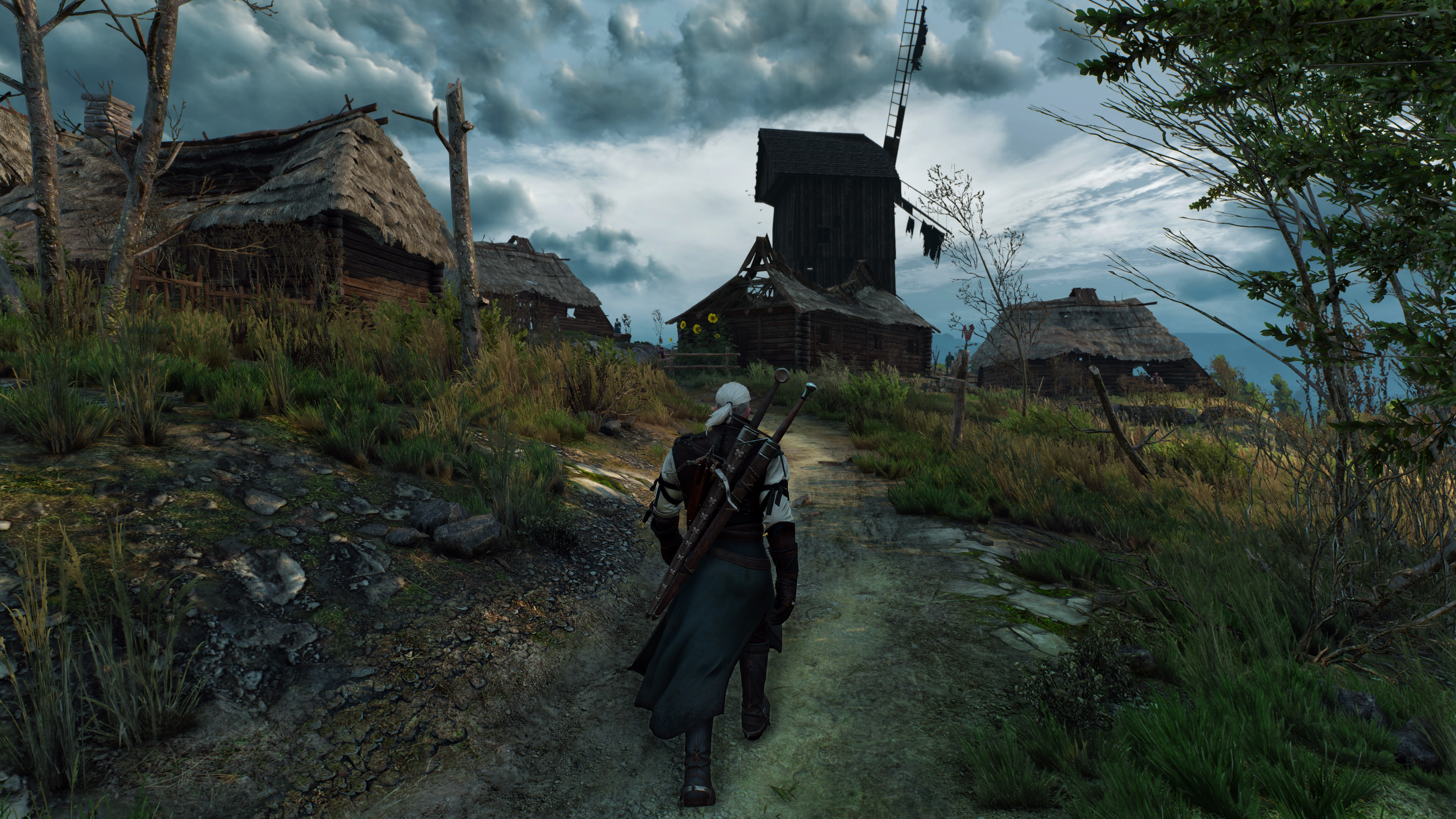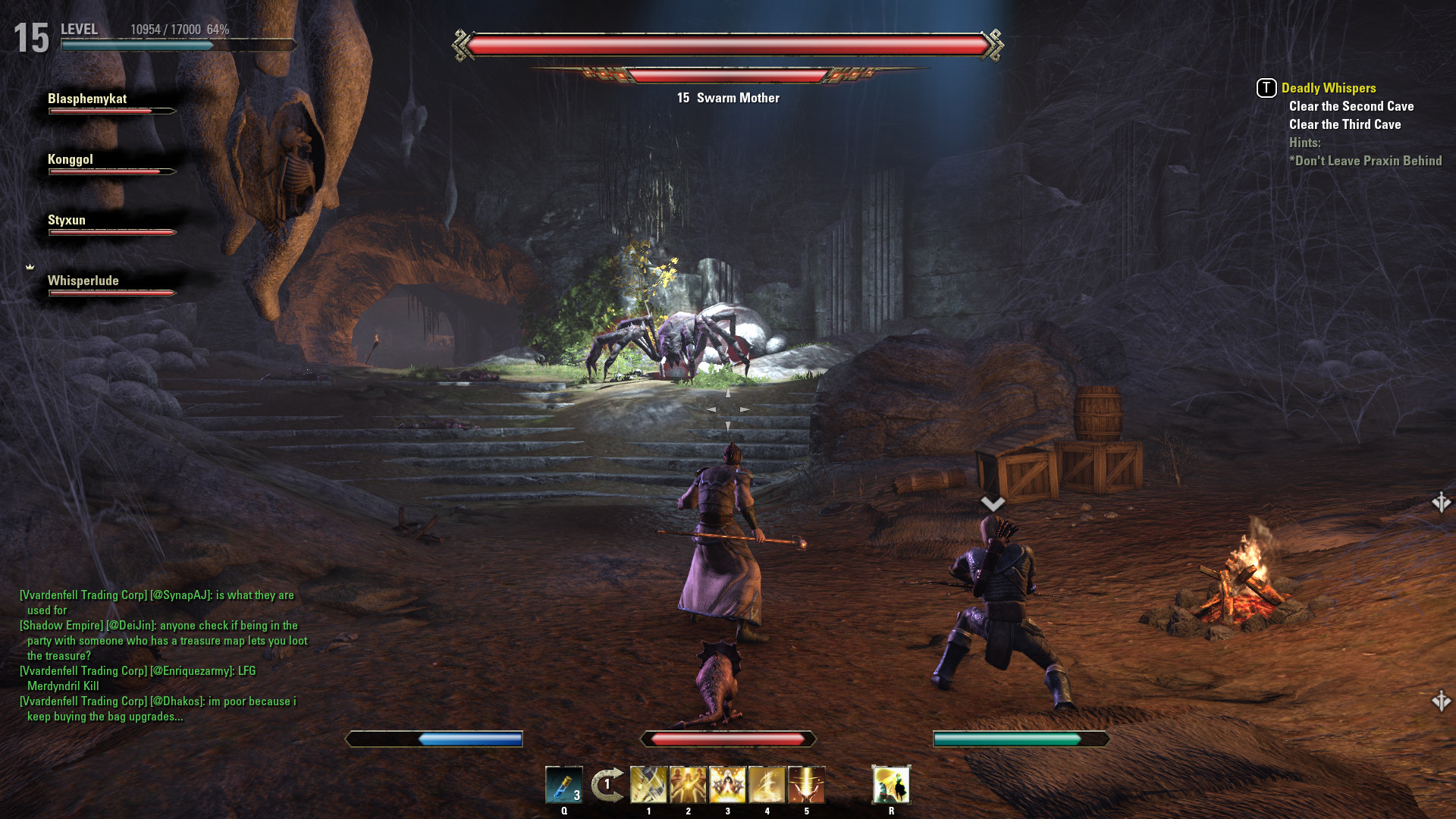If you’ve been following the latest trends in gaming development, then you’re well aware of all the hype surrounding virtual reality.
Previous conferences have already shown us some spectacular demos. We’ve seen players scale mountains, shoot Elites, and reaffirm our species’ natural fear of heights. While I can attest that they’re nothing short of entertaining, some gamers — myself included — wonder how far virtual reality can take us.
Rumors talking about a Sword Arts Online virtual reality MMO only fueled that curiosity. Although it ultimately turned out to be a fake, the very idea of it raised an even more important question:
What’s needed to make a virtual reality MMO work?
The Climb is a great example of how immersive virtual reality gaming can be.
First things first, let’s break down “virtual reality MMO.”
MMO, stands for Massively Multiplayer Online game. It’s a game that support a large number of people all playing at the same time. Virtual reality is a new computer technology that replicates an environment. It simulates the user’s presence and allows them to interact with it.
To keep things simple, we’ll be using the Oculus Rift as a reference throughout the article.
A virtual reality MMO is nothing more than a regular MMO. This time however, it supports virtual reality. In theory it seems possible, but practicing it may be a bit more difficult.
In order for it to become a reality, developers would first need to look at two things: hardware and game design.

At $599.99 the Oculus Rift costs more than your average PC.
Hardware
Developers wishing to create a virtual reality MMO need to consider the:
- hardware belonging to the player
- and hardware belonging to the server
Unfortunately, both are going to be quite expensive.
Hardware Belonging to the Player
Virtual reality is exciting. Sadly, most people fail to understand the amount of power that’s actually required to support a dedicated virtual reality headset. It’s very unlikely that your standard PC would make the cut.
Last year, Oculus Rift released their recommended PC specs. The following are the most important components required to have a decent experience.
- Nvidia GTX 970 or higher
- Intel i5-4590 processor or higher
- 8GB of RAM
- HDMI output
The two things you need to play close attention to are the graphics processing unit (GPU) and central processing unit (CPU). Combined, these two alone amount to $500. The specs may seem unnaturally high, but the reason for it is quite simple: virtual reality requires a higher framerate in order to give the best experience possible. And in order to support higher framerates, you need more power.

The Witcher 3 is one of the few games that supports 4K resolution.
Unlike a traditional computer monitor, resolutions on a virtual reality headset are rendered separately for each eye. Essentially, it’s like rendering two separate monitors. And let’s not forget that the standard FPS for virtual reality is 90 frames compared to 60. If you’ve ever played a game on 4K resolution, you’d understand how hard it is to maintain a constant 60 FPS. Now imagine trying to maintain 90.
In order to get the most out of your virtual reality experience, your hardware must be strong enough to withstand an incredible amount of computing power.
So what users need to consider can be summed down to the following four:
CPU
The central processing unit is responsible for handling all of your computer’s processing and demands. The Oculus Rift development team recommend an Intel i5-4590 processor as the bare minimum.
GPU
Because it can make or break your experience, your graphics processing unit is the most important component to consider. A proper virtual reality experience requires a significant amount of power in order to maintain a constant 90 FPS. Any frames less can result in headaches or user motion sickness. The official recommendation from Oculus is an Nvidia GTX 970.
RAM
RAM acts as a type of memory inside computers. Like most video games, 8 GBs of RAM should be more than enough to handle your virtual reality needs.
Motherboard
Your motherboard is the foundation of your computer. One of the other requirements of a virtual reality headset is to have access to two USB 3.0 ports.
It’s going to be expensive to meet all of these requirements. So, what’s the first step towards making virtual reality MMOs a reality?
Obtaining the necessary hardware.
The success of a virtual reality MMO rides solely on a player’s hardware, and at its current costs, it’s success is very unlikely.

Since its release in 2004, World of Warcraft has cost $200 million to maintain.
Hardware Belonging to the Server
Running an MMO isn’t easy. Though they’re very appealing, one of the primary reasons why developers tend to avoid MMOs is because of the grueling and costly task of maintaining a dedicated server.
In an MMO, the server has multiple responsibilities. It’s responsible for:
- Comparing where you are to other players.
- Reports how much healing or damage you have done or taken.
- Instructs your computer to display various animations on command.
- Determines what loot is dropped.
- Calculates the probality of whether your attacks make contact.
In the case of a virtual reality MMO, nothing changes, except for the fact that it has to support virtual reality machines.
Latency can make a break a multiplayer experience. A VR MMO would need zero latency.
Virtual reality is all about immersion. One of the biggest problems with MMOs is latency. Latency, for those who do not know, is basically delay. For example, if you hit a monster, the amount of time between you hitting the monster and the monster taking damage is latency. Nobody cares about low latency, but high latency tends to be very noticeable.
If virtual reality’s biggest selling point is total immersion, a server capable of handling all the tasks with no noticeable slowdown is required. Unfortunately, that would cost a lot of money.

At the moment, a virtual reality talk show is the closest we’ll get to an MMO.
Let’s sum up the hardware portion of what’s needed to make a virtual reality MMO.
In order to make it a reality, developers first need to consider what kind of hardware the average player has. At the moment, the costs of supporting virtual reality is too high to reach a mass audience. Likewise, it costs a lot more for the company to maintain a server. An MMO’s ability to draw in an audience is indicative of its future success, and frankly, it would be quite difficult when the targeted audience is currently very small.
Game Design
Now that we got the hardware requirements out of the way, let’s take a look at game design.
In order for a virtual reality MMO to become a reality, it would need to be built from the ground up, solely, with virtual reality in mind.
No, it can’t have an option to use a traditional monitor. No, you can’t suddenly decide to revert back to your old computer ways. I say this with a multitude of reasons in mind.
- For one, virtual reality games require a lot of processing power. The environment it simulates comes at the price of sacrificing the graphics our generation of gamers have come to adore. There’s a reason why we have yet to see incredibly realistic virtual reality footage — that would require an insanely powerful PC. A virtual reality MMO would have graphics that may not translate as nicely onto a traditional flat-screen monitor.
- Second, developers would need to find a way to implement all the features of your standard virtual reality device. Some headsets support eye movement, some don’t. Some support 360 head movement, some are very limited. The term virtual reality is very ambiguous. Does virtual reality end at a headset? Or does it go further than that, finding a way to include limb movement as well? In order to make a virtual reality MMO, developers need to consider their supported standard for virtual reality.
- Third, a user interface that does not break immersion is required. Most MMOs feature some sort of user-interface (UI). Even games like Second Life — a game void of combat and traditional MMORPG elements — employs one. An MMO requires a UI of some sort, and I find it incredibly difficult to think of an interface that does not break the immersion virtual reality creates.

While not the prettiest, TESO’s interface was very minimal compared to most.
Hardware may not be the only factor that can make or break a virtual reality MMO’s success. Game design is just as important.
Taking full advantage of a headset’s features, setting a standard for what is allowed, and creating a UI that doesn’t break player-immersion are the necessary game design elements needed to make a virtual reality MMO.
Conclusion
In the end, the chance of a virtual reality MMO coming out is very slim. The target audience is too small, and there will be many design challenges that would prevent the game from ever becoming a success.
But, I’ll answer the question again.
What’s really needed to make a virtual reality MMO work properly?
What’s needed is:
- more affordable virtual reality headsets
- machines that are easier to obtain and are capable of running VR software
- time and money required to maintain a server
- a large targeted audience
- a well-designed user interface
I’m not expecting a successful virtual reality MMO anytime soon. To be honest, I’m not expecting it ever. But I’ll admit, a game where I can physically look at an NPC to interact with them does sound cool. So does the opportunity to virtually punch another player, despite being miles apart. That very idea takes immersion to a whole new level.







Published: Apr 27, 2016 07:59 pm